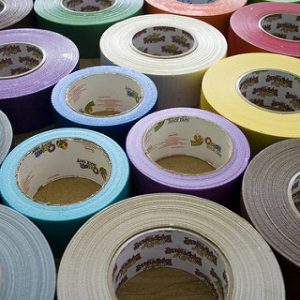Duct Sealing: Is Your Building Up to Code or Does It Need Attention?
 The ductwork is the system that carries heated or cooled air from your furnace, air conditioner, heat pump or boiler to locations throughout your building. HVAC performance relies on this conditioned air moving unobstructed and without leakage through the ductwork and out of registers at the far ends of the system. To prevent air leaks, duct sealing is necessary along the entire length of the ductwork system.
The ductwork is the system that carries heated or cooled air from your furnace, air conditioner, heat pump or boiler to locations throughout your building. HVAC performance relies on this conditioned air moving unobstructed and without leakage through the ductwork and out of registers at the far ends of the system. To prevent air leaks, duct sealing is necessary along the entire length of the ductwork system.
Air leaks in your ductwork system can account for a significant loss of energy and money, especially larger systems in commercial buildings. When heated or cooled air escapes, you’ve lost that portion of air without it being used, which wastes money. Worse, you have to pay extra to heat or cool more air to make up for what’s been lost through leakage. Ductwork leaks mean you’re sometimes paying twice to heat or cool your facility.
Ductwork systems can be quite lengthy and complex, which creates many locations where ducts can develop leaks. Sections of ductwork can come apart, existing seals can be broken, animals or rodents can cause damage, and simple age and gravity can cause loose sections. Duct sealing ensures that all sections of ductwork fit tightly together and that there are no openings, holes or loose sections that could allow heated or cooled air to escape.
Duct insulation code sources and authorities
The construction industry has established code requirements for duct sealing and repair. Reliable and authoritative resources for duct sealing include:
- International Mechanical Code (IMC) 2009 and 2012
- Internal Energy Conservation Code (IECC) 2009 and 2012
- ASHRAE 90.1-2007 and 2010
Refer to these standards and consult with your local trusted HVAC contractor for detailed information on duct sealing requirements.
General duct sealing requirements
ASHRAE 90.1-2007, Section 6.4.4.2.1 establishes that ductwork and plenums are to be sealed according to published standards and levels. Outdoor ducts and ducts that operate at pressure levels above 3 w.c. must be sealed at the A level as described below. Ducts of this type must pass industry-approved duct leakage tests and are required to be sealed according to industry best practices.
In general, duct sealing requires that sections of ductwork fit tightly together at joints and connections. All joints, seams and connections must be secured with welds, gaskets, liquid sealants, or appropriate tapes, such as metal tape. Seams and connections can also be sealed with mastic, a sealing compound designed especially for ductwork, or with mastic/embedded fabric sealants that are stronger and more reliable. In some cases, joints can also be mechanically fastened with screws or other types of fasteners. Standard duct tape should be avoided, since the adhesive can dry out and fail.
Duct sealing levels
Code standards establish three different levels of duct sealing, depending on the type and location of the ductwork.
- Level A: All longitudinal seams, transverse joints and duct wall penetrations must be sealed. Pressure-sensitive tape must be avoided as the primary sealant unless it complies with UL-181A or UL0181B.
- Level B: All transverse joints and longitudinal seams must be sealed. Pressure-sensitive tape cannot be used as the primary sealant unless it complies with UL-181A or UL0181B.
- Level C: Sealing is required in transverse joints only.
For the purposes of these standards:
- Longitudinal seams are joints installed in the same direction of airflow within the duct.
- Transverse joints are connections of duct sections that are perpendicular to airflow inside the duct.
- Duct wall penetrations are any openings or holes made in the duct itself by physical fasteners such as screws, wires or rods.
Our goal is to help educate our customers about Plumbing, HVACR, Fire Protection and Alarm Systems in Mechanical, Commercial and Residential settings. For more information about code requirements for commercial duct sealing and to view projects we’ve worked on, visit our website!
Image Credit: woodleywonderworks







